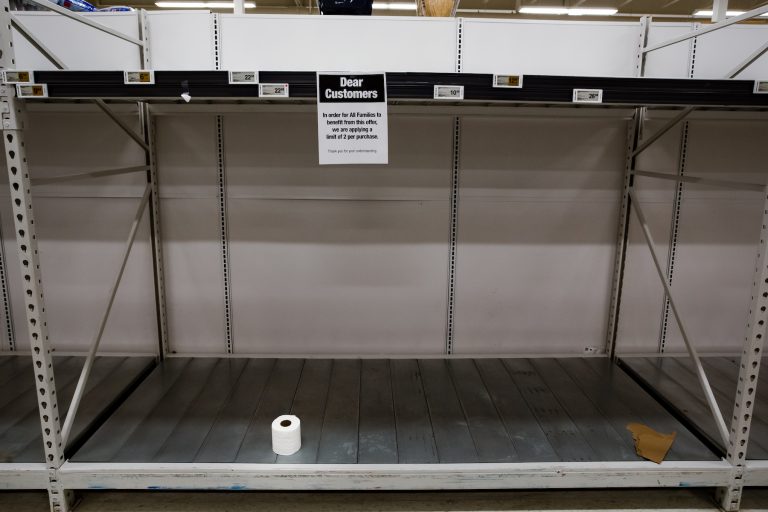Surging energy prices and supply chain delays are threatening the economic recovery whilst causing significant issues for businesses still struggling with the aftermath of COVID-19 restrictions. On top of this, SMEs must navigate local bottlenecks – such as UK border delays, transport, and petrol shortages – causing further stress.
 Worries about stagflation and the looming rise of interest rates are undoubtedly causing angst for SMEs across Europe, too. A steady decline in business output and the impact of the supply chain crisis means the perfect cash flow storm is brewing for this vital community.
Worries about stagflation and the looming rise of interest rates are undoubtedly causing angst for SMEs across Europe, too. A steady decline in business output and the impact of the supply chain crisis means the perfect cash flow storm is brewing for this vital community.
Mikkel Velin, co-CEO at YouLend provides SMEToday’s readers with some thoughts .
How did we get here?
As Covid-19 hit, consumer demand shifted from services towards goods. Restaurants and pubs closed, stages were empty across theatres, and cinema screenings were put on hold amid extensive lockdowns and restrictions on social gatherings.
Instead, consumers started spending more money on things; anything from clothes to electronics, furniture to fitness equipment. This spending was supported by economic stimuli from governments across Europe, keeping unemployment relatively low, meaning consumers still had money to spend but fewer places to do so.
Whilst demand can be boosted in a number of ways, for example by printing money, it is not so easy for supply. Put differently, a motorway doesn’t get more lanes as a result of an increase in traffic. This dynamic has caused a major supply chain traffic jam over the last year, resulting in significant delays in delivery times.
Adding to these challenges, a shortage of materials and a reduction in factory output due to Covid-19 difficulties have reduced the number of goods being produced. It’s not just a problem of moving stuff around. The world is still struggling to make enough stuff, too. Research from Bloomberg Economics shows that Europe has shifted rapidly from excess supply to significant shortage over the last few years, compounded by a hike in energy prices and wage inflation.
In this environment, the key pain point for SMEs is cash flow; fewer goods mean lower revenue, more expensive goods mean lower profit margins, and delivery delays mean working capital issues.
So, how can SMEs protect their businesses in this environment?
Whilst there is optimism that 2022 will see improvements – albeit slow – as for the remainder of 2021, we will struggle to see material gains. Despite efforts from the government to mitigate the supply chain crisis, some experts are even predicting the disruptions will continue well into 2023.
As a result, SMEs will need to adjust to more volatile supply chains in the future. Order and delivery cycle expansion will impact SME cash flow negatively, and a lack of visibility will impede their ability to plan, invest, and grow.
No two SMEs are the same, but here are three high-level areas where SMEs should focus if they want to protect their businesses:
- Source locally to reduce transport time and costs
The delivery cycle is extended considerably by both shipping and ground transport bottlenecks. There are significant price rises on key commercial routes – from Asia to Europe, for example – leading many to find local suppliers where possible. Local suppliers who may have seemed more expensive pre-pandemic are becoming more attractive as rising shipping costs are eliminated and SMEs gain better visibility over delivery times.
- Plug the (potential) cash flow gap quickly through external finance
Extended delivery times means SME working capital is more strained than usual, despite increasing economic activity. Simply speaking, even though an SME might see an increase in sales, they are paying earlier for goods, receiving them later, and making less profit as shipping costs erode margins in the short term.
- Look for flexibility when seeking funding
Buy now pay later is gaining momentum as an alternative funding option for SMEs. But here, fixed amortizations are an issue.
In times of uncertainty, it’s important to finance working capital flexibly. A fixed amortization product fits poorly to this reality whereas revenue-based repayments give SMEs increased flexibility in times of unknown working capital cycles.
Payments companies and e-commerce platforms are ideally placed to solve this problem for SMEs. Embedded financing models allow alternative lenders to understand SME needs through real-time data, link amortizations to realised revenue for SME customers, and offer a seamless and efficient onboarding process relative to traditional players.
A historically underserved but vital community to the economic recovery, SMEs need flexible lending solutions to manage their working capital and access the finance needed to get ahead of persistent supply chain headaches. This crisis is unlikely to disappear any time soon; for businesses wanting to not only survive but thrive in this environment, access to flexible, alternative funding will be key.

